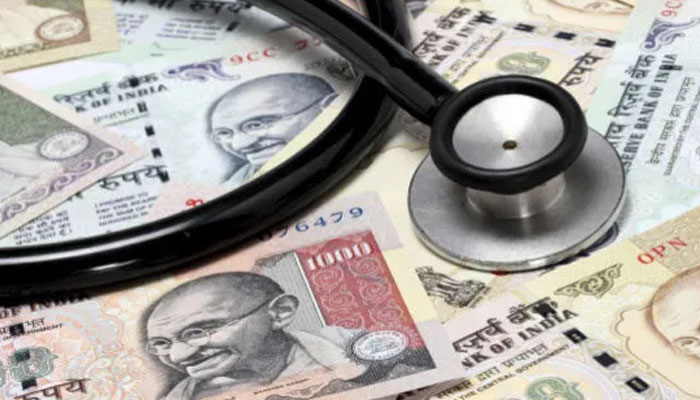The Indian healthcare system is in a conundrum on many accords, be it in terms of the deliverables or achieving desirable patient outcomes. Achieving access, affordability, and cost containment are the major battles to be waged, just like in many other countries; striking a balance in the triple aim of healthcare. Healthcare industry in India amalgamates various disparate services like hospitals, pharmaceutical, medical devices, and the health insurance sector. A major chunk of it constitutes hospitals; both public and private. While public hospitals are stifled with paucity of funds to boost infrastructure and human resources, the private hospitals remain defiant to rising costs, price-setting, new and advanced technologies, and rising physician and nursing remuneration. Pricing for medical services have remained contentious and remains the most neglected phenomenon in India. To digress, it seems policy makers and leaders dodge the topic of pricing policies for medical care because of the complexities involved in it. Reckless pricing has had its own repercussion from causing appalling poverty levels to disrupting the normal functioning of middle class families. With all this, equity and quality in healthcare service is not guaranteed. Much has been talked about the urgency of hospital pricing in the country, to reignite the whimsical pricing by hospital, but still remains unattainable.
Pricing practices for medical services in hospitals do not hold common grounds with pricing for non-healthcare products and other service types. This is because hospital services are ill defined, variable, uncertain, and involve third party payments like insurers. This distinctive facet of hospital services should have drawn greater attention of policy makers, academicians, and activists towards hospital pricing policies. But has failed to do so.
In the Indian context, healthcare services are pre-dominantly provided by private for-profit and non-profit hospitals. While the two categories of hospitals have significant contribution in healthcare in India, of primary concern is the private hospital, especially the corporate. That is, in terms of the prices charged and if the prices speak quality. Because private hospitals are dominant players in India, pricing for services at private hospitals has warranted scrutiny in their price-setting practices. Patients and caregivers have borne the brunt of unacceptable and exorbitant prices from private for-profit hospitals convoying headlines across India. Multiple reasons have been floated for such unreasonable prices for medical services – poor pricing practices, poor governmental interventions, advent of new and modern medical technologies, rising fuel prices, physicians graduating with foreign degrees, and lack of healthy competition among hospitals. Soaring prices are exclusionary, causing poor accessibility to quality healthcare services for the middle and low income families creating an environment of inequitable healthcare system.
Indian hospitals lack robust pricing policies, unlike their western counterparts. Economic literature attests that many pricing policies are suitable for products and services other than hospitals. Limited focus has been accorded to pricing policies for private hospitals in India. Pricing strategies such as cost plus pricing, competition focused pricing, demand based/consumer based pricing may be relevant in the hospital sector as well. Within the Indian context, health economic researchers have developed costing databases to inform pricing decisions and help develop policies. To what extent consumer inputs have been taken for determining pricing in private hospitals is unclear. Competition among hospitals play a vital role in lowering the prices for medical services. Even if hospitals are engaging in market research activities to determine the actions of their competitors, very little or nothing has been done to study market concentration or jot in the form of peer-review evidence. Pricing studies in the U.S have utilized Herfindahl – Hirschman index to assess market concentration for hospitals and their implications for service pricing. Evidence from scholarly literature on pricing for hospitals subscribes to the use of combination of pricing policies in hospitals. However, developed countries have abandoned the use of traditional cost-plus pricing and have adopted prospective payments like Diagnosis Related Groups. It is not clear whether high prices for hospital services are due to an implicit formation of cartel. There needs to be greater level of understanding on how these policies can be implemented into our health systems.
Private tertiary care hospitals in India had a dubious distinction of charging exorbitant prices for both critical and non-critical care, during the covid-19 pandemic. Hospital pricing was disregarded during ordinary times. Therefore, hospitals found it convenient to raise their prices incessantly during the pandemic. This escalated patient and caregiver dissatisfaction, causing rising anger among the masses leading to government intervention.
Lack of trust among patients, private hospitals, and governments continue to persist. Enhancing price transparency can reduce mis-trust among patients. Maintaining a charge master of prices, like it is done in U.S, can also raise price transparency levels reducing distress for patients and help them prepare for their out of pocket expenses. Astute understanding of negotiating practices of hospitals with insurers will be bring greater clarity on medical service pricing in India. The pricing research of private hospital pricing is beset with owing to the institutional complexities and regulatory repugnance.


















